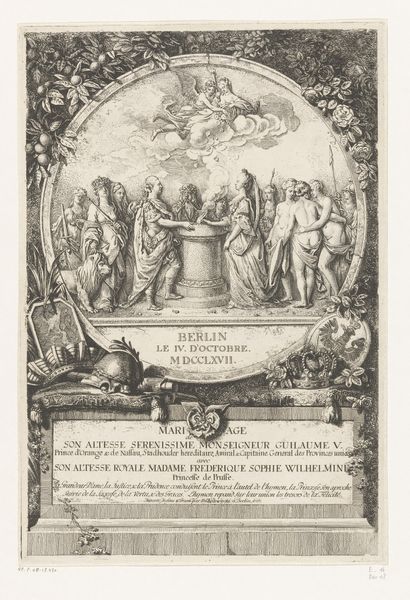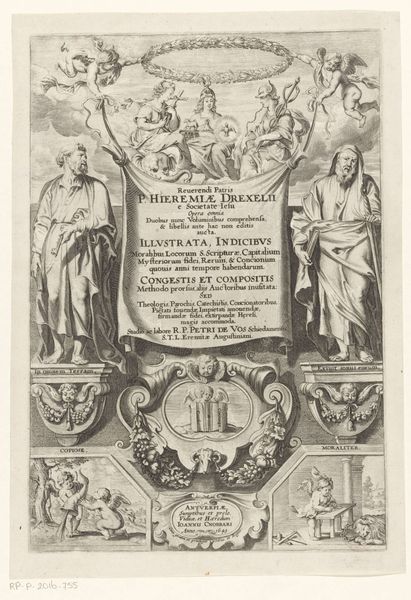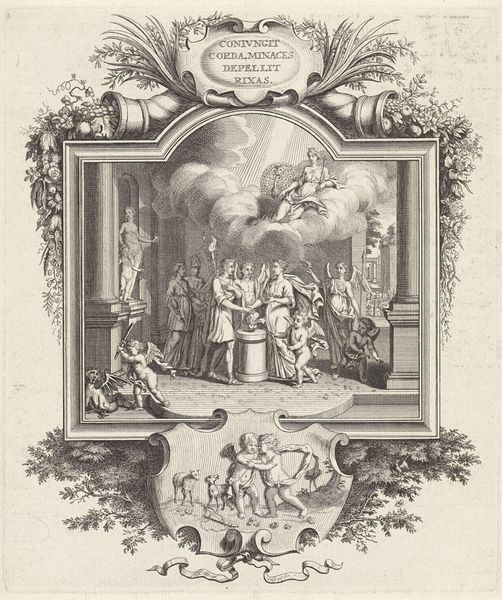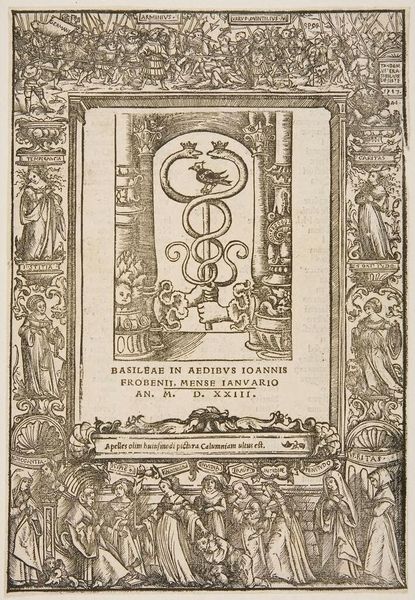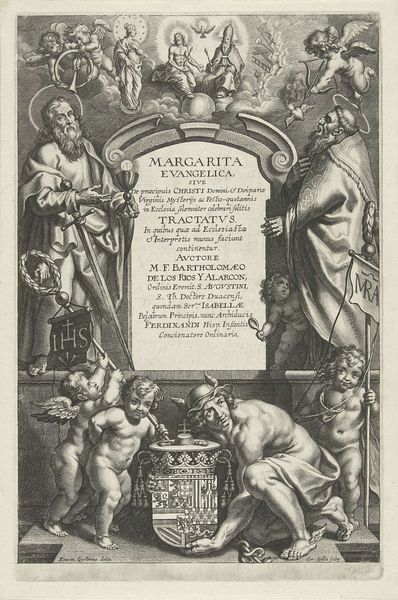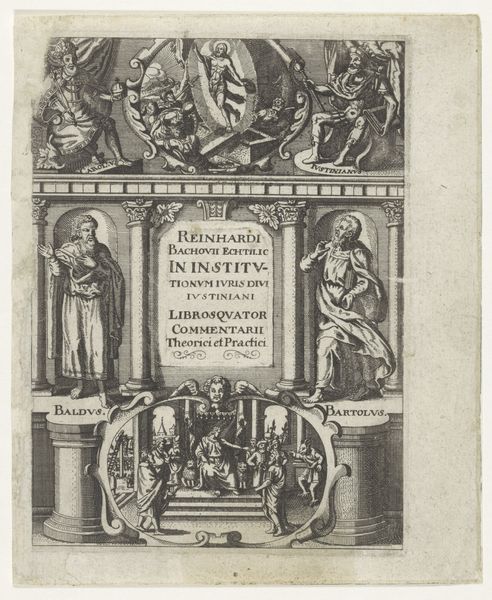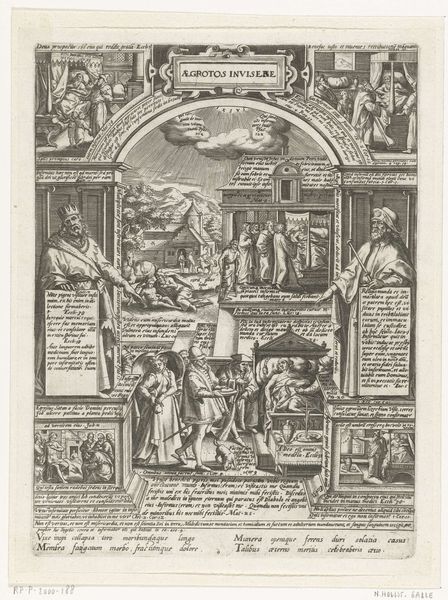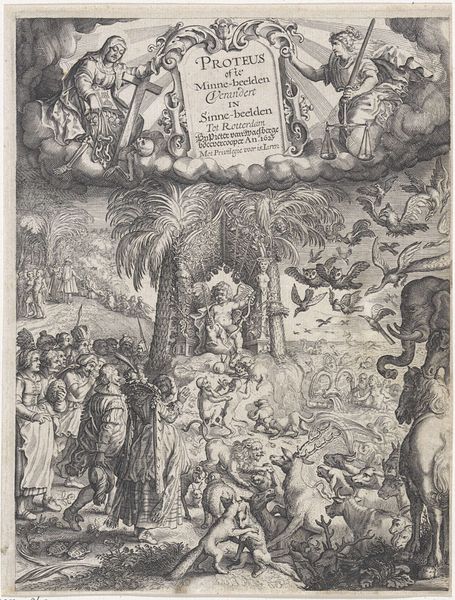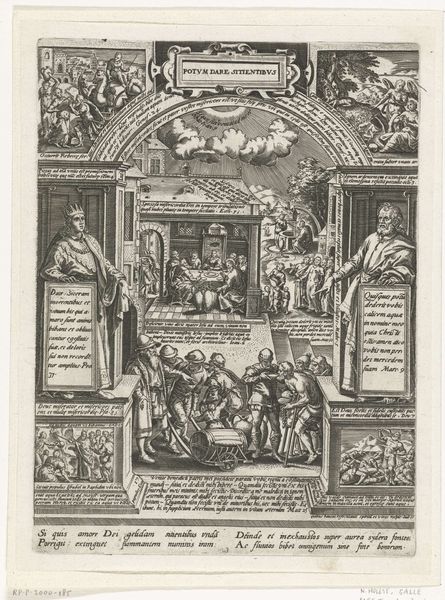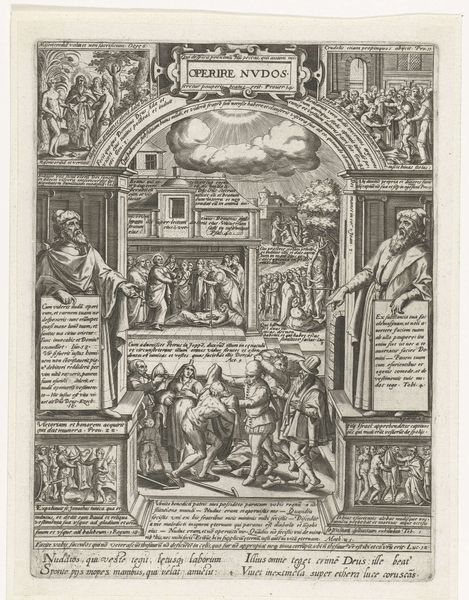
God tronend, uitstorting van de Heilige Geest, bevrijding van Paulus en apostelen 1627
0:00
0:00
cornelisgallei
Rijksmuseum
print, engraving
#
baroque
#
pen drawing
# print
#
pen illustration
#
pen sketch
#
old engraving style
#
figuration
#
history-painting
#
engraving
Dimensions: height 315 mm, width 202 mm
Copyright: Rijks Museum: Open Domain
Editor: This is a print by Cornelis Galle I, created in 1627, currently held at the Rijksmuseum. The full title is quite a mouthful: *God tronend, uitstorting van de Heilige Geest, bevrijding van Paulus en apostelen*. It has a really elaborate, almost overwhelming composition. How do you even begin to approach a piece so dense with detail? Curator: Let us consider its structure. We see a clear hierarchy established through the composition. God is enthroned at the top, bathed in light, literally and figuratively the high point, then arranged symmetrically down from there. What effect does this compositional choice have? Editor: It definitely emphasizes God's power and centrality. Everything visually flows down from that point. The symmetry provides a sense of order amidst the chaos of figures and action. Do you think the rigid structure could also be limiting? Curator: Limiting perhaps for expressive potential in a different context, but consider its function. It's a title page for a commentary on the Acts of the Apostles. Therefore, clarity and order are paramount. Semiotically, we can read the ascending arrangement as a visual representation of spiritual elevation. Do you notice any specific artistic decisions when looking at the treatment of light and shadow? Editor: Yes, the engraving creates distinct areas of light and dark. Figures seem to emerge from the shadows, drawing attention to specific gestures and expressions. It’s interesting how Galle used this technique to create drama within such a tightly controlled composition. Curator: Precisely. Galle manipulates light to guide the viewer's eye and emphasize the spiritual narrative. Editor: So, by analyzing the composition and technique, we can understand how Galle visually communicates religious themes in a structured way. Curator: Indeed. The artist’s formal choices become the vocabulary through which the story unfolds. Looking closely, one can gain profound insights.
Comments
No comments
Be the first to comment and join the conversation on the ultimate creative platform.
